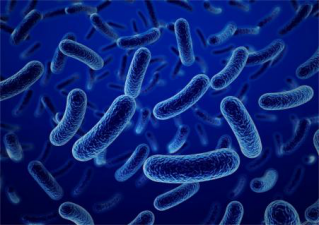Purpose requirements:
1. Master the extraction method of saponins (lipophilic and neutral components).
2. Familiar with the nature and identification of diosgenin.
Introduction:
Diosgenin is a steroidal saponin, molecular formula (C 27 H 42 O 31 ), molecular weight 414.61, white crystal, mp204~207°C, [ ]25D-129.3(CHCl 3 ), soluble in general organic Solvent and acetic acid, insoluble in water. At present, it is an important raw material for the manufacture of various steroid drugs such as oral contraceptives (No. I, No. II contraceptive tablets) and steroid hormones (such as cortisone). In the plant kingdom, it is mainly distributed in Dioscorea plants. There are more than 80 species of Dioscorea in China, among which only 17 species, I subspecies and a variety of Stenophora contain steroidal sapogenin. Others contain a lot of starch and no saponins. The main products that have been used for production are D. Zingiberensis CH Wright, D. nipponica Makino, D. panthaica prain et Burkil, D. nipponica Makinovar rosthani prain et Burk. )Wait. In the plant, diosgenin is present in combination with glucose and rhamnose to form dioscin. When extracting and separating, it is generally first to hydrolyze diosgenin with dilute acid to diosgenin and monosaccharide (glucose, rhamnose). Since diosgenin is insoluble in water and is mixed in plant residues, diosgenin can be directly extracted from plant residues by an organic solvent such as petroleum ether.
![]()
Extraction Method
1. Saponin pre-test:
2. Extraction of diosgenin:
![]()
Note 1: Check whether the diosgenin is exhausted, and the Lieberman reaction can be used. Refer to the second note of the second experiment.
Note 2: The method for recovering petroleum ether is shown in Experiment 1, “Note 4â€.
Note 3: After the obtained diosgenin (crude) is washed with petroleum ether, the melting point can be determined. If the melting point is unqualified, recrystallization is carried out.
Identification of Diosgenin
1. Melting point determination: 204~209°C
2. TLC identification:
Only one stain should be presented that is consistent with the standard Rf value.
Sample: white crystalline anhydrous alcohol solution
Standard: Diosgenin anhydrous alcohol solution
1) Adsorbent: AI 2 O 3 soft board (neutral 100-200 mesh, active grade III)
Developer: Benzene-methanol (9:1)
2) Adsorbent: Silica gel H-CMC hard board
Developer: petroleum ether - ethyl acetate (7:3)
Color developer: 10% phosphomolybdic acid ethanol solution. Heat 10 to 20 minutes after spraying
3) Chemical reaction:
1Liebermann-Burchard reaction
2CHCI 3 - concentrated H 2 SO 4 test
3 antimony pentachloride reaction (Kahlenberg reaction): a solution of antimony pentachloride in chloroform is purple blue.
4) Preparation of derivatives:
Method for preparing acetylate: 100 mg of the sample is dissolved in 3 ml of pyridine, 20 ml of acetic anhydride is added, and after boiling for half an hour to one hour, the reaction product is poured into ice water (cold water can be used in winter operation). After the white crystals are to be precipitated, they are suction filtered, and the precipitated acetone is recrystallized. Mp196 ~ 193 ° C.
5) Determination of ultraviolet absorption spectrum:
5 mg of the sample was taken, 10 ml of concentrated H 2 SO 4 was added, and the mixture was heated on a water bath at 40 ° C for 1 hour, allowed to cool, and measured. Diosgenin should have the following maximum absorption peaks:
Λmax 271nm 415nm 514nm
10gε 3.99 4.06 3.64
Biocide Technical Ingredients
Biocide Technical Ingredients
All water based products have plenty of nutrients and water to support microbe growth under favorable conditions. Microbes invade water based products from multi-point sources, such as contaminated raw materials, poor plant hygiene, untreated water, and not properly preserved recycling materials. While adding in-can preservatives into the products should not excuse a factory from Good Manufacturing Hygiene Practices (GMHP), proper use of in-can preservatives coupled with GMHP can dramatically minimize the chance of microbial tolerance development, and assure unspoiled products to customers.
Biocides formulators often use several types of in-can preservatives as active ingredients in their biocidal products for various industrial water based products. One of these active ingredients is benzisothiazolone (BIT). It has several distinct performance advantages, including good stability at high pH, good stability in the presence of reducing agents, and broad spectrum of activities against many microbes.
Sunshine Biotech supplies to all industrial biocides formulators with high quality BIT technical ingredients. Besides of BIT, we also provide its derivative, like BBIT, MBIT etc.


Biocide Technical Ingredients,Biocide Formula,Biocide Ingredients,Biocide Liquid
Nanjing Sunshine Biotech Co., Ltd , https://www.sunshine-bio.com

